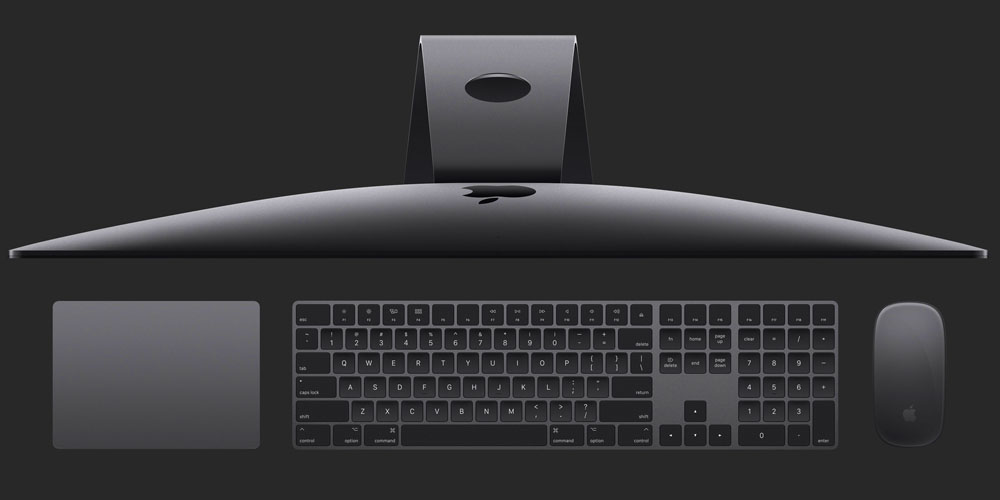The iMac Pro failed due to high pricing and lack of significant upgrades compared to other options in the market. It struggled to justify its cost and did not offer substantial improvements enough to attract customers.
The iMac Pro, despite its powerful performance and sleek design, faced challenges in finding a target audience willing to invest in it. Let’s dive deeper into the reasons behind its underperformance and understand the impact it had on the market.

Introduction To The Imac Pro And Its Promise
The iMac Pro was Apple’s attempt to cater to the professional market,
offering a powerful all-in-one desktop solution. Advertised as the
ultimate workstation for creative professionals, it promised top-tier
performance and exceptional design. However, despite the initial hype,
the iMac Pro did not live up to its promise, and several factors led to
its eventual failure.
Features And Specs
The iMac Pro boasted impressive specifications, including a
high-resolution Retina display, powerful Intel Xeon processors, and
advanced AMD graphics options. Its all-in-one design combined with
cutting-edge components made it an appealing choice for professional
creatives, including video editors, graphic designers, and 3D
animators.
Initial Reception In The Market
Upon its release, the iMac Pro garnered significant attention and
anticipation within the professional community. Its powerful hardware
and sleek aesthetics generated initial excitement, positioning it as a
potential game-changer in the professional desktop market. However, as
time progressed, issues with pricing, upgradability, and performance
limitations began to surface, impacting its reputation among
professional users.

Credit: 9to5mac.com
Competitive Landscape
The failure of the iMac Pro can be attributed in part to the intensely competitive landscape of the computer industry. In this section, we will delve into the analysis of rival offerings and the pricing strategies that contributed to the downfall of the iMac Pro.
Analysis Of Rival Offerings
When considering the iMac Pro’s lackluster performance, it is essential to analyze the offerings of its rivals. Competing products such as the Microsoft Surface Studio and the Dell XPS 27 have gained traction in the market due to their innovative designs and powerful performance.
Pricing Strategies
The pricing strategies adopted by competitors played a pivotal role in the iMac Pro’s failure. While Apple positioned the iMac Pro as a premium offering with a hefty price tag, rivals offered similar or even superior performance at more competitive price points, making the iMac Pro less appealing to cost-conscious consumers.
Technological Limitations
Technological limitations played a significant role in the failure of the iMac Pro. Despite its initial hype, the product faced numerous challenges related to hardware, performance, and compatibility, ultimately contributing to its downfall.
Hardware And Performance Shortcomings
The iMac Pro suffered from hardware and performance limitations that hindered its appeal. The system’s reliance on outdated components led to subpar performance compared to newer, more advanced models. The inability to keep up with the demands of modern computing tasks put the iMac Pro at a disadvantage in the competitive market.
Compatibility Issues
The iMac Pro encountered compatibility issues that further hindered its success. Incompatibility with certain software and peripherals left users frustrated and limited the device’s functionality. This lack of versatility meant that the iMac Pro was unable to meet the diverse needs of its target audience, causing it to fall short of expectations.
Marketing Strategy Analysis
The marketing strategy analysis of the iMac Pro failure reveals critical insights into its market positioning, pricing, and consumer demand, shedding light on the factors that contributed to its lackluster performance. This analysis can provide valuable lessons for businesses aiming to avoid similar missteps in product development and marketing efforts.
Target Audience And Messaging
The failure of the iMac Pro can be attributed, in part, to the misalignment of its marketing strategy with its target audience and messaging.
The target audience for the iMac Pro was businesses, creative professionals, and power users who required high-performance computing capabilities. However, Apple’s messaging failed to resonate with this demographic, focusing more on the design and aesthetics rather than the machine’s powerful specs and capabilities.
Brand Positioning
Apple’s brand positioning for the iMac Pro also contributed to its failure. The company positioned the iMac Pro as a luxury product, emphasizing its sleek design and premium build. While this may have appealed to some consumers, it failed to capture the attention of the target audience who were more interested in performance and functionality over aesthetics.
Public Perception
The public perception of a product can significantly influence its success or failure in the market. In the case of the iMac Pro, public perception played a crucial role in its performance. Let’s examine how reviews and user feedback, as well as reputation management, impacted the public perception of the iMac Pro.
Reviews And User Feedback
Reviews and user feedback can heavily shape the public perception of a product. In the case of the iMac Pro, early reviews highlighted its impressive performance and sleek design, garnering initial excitement among tech enthusiasts. However, as users started to experience hardware issues and performance limitations, negative reviews and feedback began to surface.
Reputation Management
Effective reputation management is essential for maintaining a positive public perception. With the iMac Pro, Apple faced challenges in addressing the growing concerns about hardware issues and performance discrepancies. The company’s reputation took a hit as users voiced their discontent on various online platforms, impacting the overall perception of the product.
Financial Considerations
When examining the reasons behind the failure of the iMac Pro, it’s crucial to delve into the financial considerations that played a pivotal role in its downfall. From the initial cost-benefit analysis to the return on investment, the financial aspect sheds light on the challenges that the iMac Pro faced in the market.
Cost-benefit Analysis
One of the primary financial factors behind the failure of the iMac Pro was the cost-benefit analysis. Despite being marketed as a powerful and versatile machine, the iMac Pro came with a hefty price tag, which posed a significant barrier for many potential buyers. The cost of the iMac Pro outweighed its perceived benefits for the target audience, leading to a lack of adequate demand and resulting in poor sales performance.
Return On Investment
The return on investment for the iMac Pro was another critical consideration that contributed to its failure. For many consumers and businesses, the high initial investment in the iMac Pro did not align with the perceived value and longevity of the product. The lack of substantial long-term benefits and competitive advantage hindered the justification for investing in the iMac Pro, ultimately impacting its market position and sales performance.
Decision-making Processes
When analyzing the downfall of the iMac Pro, it’s crucial to delve into the decision-making processes that may have contributed to its lackluster performance in the market. Strategic planning, risk assessment, and other crucial factors played a pivotal role in shaping the fate of Apple’s ambitious product.
Strategic Planning
The strategic planning behind the iMac Pro was aimed at addressing the needs of professionals requiring high-performance computing. However, the market landscape shifted rapidly, and the product’s strategic planning may not have accurately anticipated the evolving demands and preferences of its target audience.
Risk Assessment
Comprehensive risk assessment is vital for any product launch, especially in the highly competitive tech industry. In the case of the iMac Pro, potential risks such as market saturation, competitive pricing, and technological advancements weren’t fully mitigated, impacting the product’s viability and market acceptance.
Lessons Learned
The failure of the iMac Pro offers valuable insights to learn from. Understanding the feedback and implications enables us to identify opportunities for future improvements and adjustments.
Feedback And Improvements
Customer feedback revealed significant shortcomings in the iMac Pro that contributed to its lackluster performance in the market. Inadequate upgradeability and limited customization options were major pain points for users who required high-performance features. To address this, future products should prioritize modularity and expandability to cater to diverse user needs.
Additionally, constructive criticism highlighted the need for better thermal management and enhanced cooling systems to prevent overheating issues. This feedback serves as a crucial guide for refining hardware design and ensuring optimized performance in future releases.
Future Prospects
The iMac Pro’s failure has undoubtedly sparked introspection within the technology industry, compelling companies to evaluate and evolve their product strategies. Rigorous market research and adaptable design processes will be critical in driving future success. Companies must remain attentive to advancements in consumer demands and technological preferences to maintain relevance and competitiveness in the market. This experience serves as a poignant reminder that achieving sustainable success mandates a relentless pursuit of innovation and adaptation.
Looking beyond the past, it’s essential for technology companies to assert commitment to continued learning and evolution, ensuring that prospects for innovation remain primed for success.
Frequently Asked Questions For Why Did The Imac Pro Fail?
Why Did The Imac Pro Fail?
Despite its powerful hardware and sleek design, the iMac Pro failed to capture a significant market due to its high price point, lack of frequent updates, and competition from other Apple products. Additionally, the lack of upgradability and limited configurability deterred potential buyers, resulting in its decline in the market.
Conclusion
The iMac Pro faced challenges due to its high price and lack of significant updates. Its competition in the market has been tough, leading to its inability to stand out. Despite its powerful performance, the lack of innovation and cost-effectiveness contributed to its downfall.
The future of the iMac Pro remains uncertain, but this experience provides valuable insights for Apple’s future product strategy.

